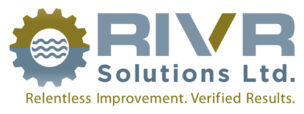In the face of looming tariff threats on Canadian imports by the United States, businesses on both sides of the border have been forced to reevaluate their business models and pricing strategies. This challenge presents an opportunity to adopt a more strategic approach that focuses on productivity, efficiency, and customer value.
I harken back several years ago when I worked for a company who supplied parts to Boeing. Boeing was the majority of our business, and what happens with Boeing normally flowed down to their suppliers. One year Boeing told us, “Beginning next year, we are only going to pay 95% of the current price that you are selling your parts for today.”
Boeing being the majority of our business, what were we going to tell them? “No?” They would have happily contacted another supplier that would do them for cheaper. This forced us to take a Market-In approach.
Most people take a Cost-Out approach. You figure out how much it will cost to manufacture a product or deliver a service, add the desired margin for that product or service, and that becomes your actual sales price. This seems like a logical approach, until you test that price to the rest of the market. Are you competitive? Can you justify this cost with a unique solution?

Many times either quality suffers to bring the cost down, or profitability takes a hit just to be competitive.
However, if we take a Market-In approach, determining first what price the market will bear, and then determining the margin we want to achieve, ultimately coming up with the cost that we need to achieve to meet our goals.
At this point, the focus gets turned to operational productivity and efficiency to eliminate waste in the current process to achieve a target cost goal. Hopefully, as we continue to improve our processes, not only can we maintain the competitive market price, but gain profitability through relentless elimination of waste.
In the face of tariff threats, businesses can use this approach to lessen the impact of increased costs on both themselves and their customers. By focusing on productivity and efficiency, companies can regain control and mitigate the potential negative effects of tariffs.
This is a call to action for businesses to take a proactive approach. By embracing the market-in approach, businesses can not only navigate the current challenges posed by tariffs but also emerge stronger, more competitive, and more resilient in the long term.

